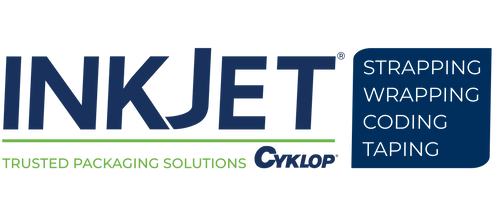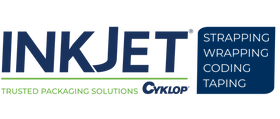Cosmetic Batch Codes: Product Printing Solutions
Cosmetics are one of the biggest segments in the personal care industry. Along with fragrances and skin care products, cosmetics constitute a substantial portion of the personal care market that’s worth more than $500 billion. Large corporations like L'Oréal, Unilever, and P&G generate millions of cosmetic sales every year, while smaller boutique operations profit by selling specialty goods via direct-to-consumer sales and private label deals.
|
|
||
To help companies create cosmetic batch codes consistently, InkJet, Inc. offers a range of product coding solutions designed for different line setups and substrates.
In this blog, we examine the best cosmetic batch coding options on the market, explain their strengths, and describe their ideal applications.
A Comparison of Today’s Top Cosmetic Batch Coding Solutions
This table shows today’s most popular cosmetic batch coding technologies and their important features. For more information about each option, click on the solution title in the leftmost column to jump to a detailed description below.
Continuous Inkjet Printer
Continuous inkjet (CIJ) printers are high-speed production line printers that can operate up to 24 hours a day without interruption. Compatible with both porous and non-porous materials, CIJ printers are versatile machines that can mark flat and curved surfaces with long-lasting codes.
CIJ printers are powerful, versatile, and reliable enough to complete demanding coding tasks day in and day out. CIJ models like the DuraCode Touchscreen and DuraCode 260-P Pigment Printer are also built with substantial outer structures to maintain consistent results in harsh conditions. All DuraCode models offer IP55 industrial protections to prevent hardware damage and miscoding due to dust and liquid ingress.
Thanks to these features, cosmetic companies frequently use CIJ printers to mark product packaging made from:
DuraCode CIJs can print codes up to 15 mm tall at speeds of up to 320 m/min. However, their resolution capabilities are relatively limited compared to other technologies. Although they can create machine-scannable barcodes and QR codes, they cannot match the code size and DPI capabilities of TIJ printers and laser marking machines.
Nonetheless, CIJ printers are an excellent choice for general batch coding applications and other high-speed marking tasks.
|
|
|
|
|
|
Thermal Inkjet Printer
Thermal inkjet (TIJ) printers are much smaller and lighter than CIJ printers. While CIJ printers can weigh up to 100 pounds when filled with ink, TIJ printers like the Anser U2 Pro-S weigh around 5-10 pounds. These dimensions enable users to easily install TIJ printers on their production lines, move them when necessary, and in certain cases, use them as handheld printers.
Although TIJ printers are compact, they have powerful capabilities. For example, both the Anser X1 and Anser U2 SmartOne can produce codes up to one inch high at 600 x 300 DPI (max 600 x 600 DPI for the Anser X1). These abilities allow TIJ users to complete product coding applications as well as case coding tasks. Users just need to be sure to match the TIJ to their materials, for many TIJ printers are only compatible with either porous or non-porous materials.
In general, TIJ printers cannot match the coding speed of CIJ printers. The average CIJ printer offers a max speed of around 300 m/min, while most TIJ printers max out at around 70-90 m/min. However, high-end TIJs like the Anser X1 can achieve speeds of up to 300 m/min. High-end models typically have IP-rated outer structures as well.
Compared to CIJ printers, TIJ printers cost significantly less upfront, making them a cost-effective option for smaller operations and companies that don’t require industrial coding speeds. They also have minimal maintenance needs, which lowers the overall cost of ownership. TIJ fluids do cost more than CIJ fluids, however, and their cartridges are much smaller, requiring more frequent changes.
|
|
|
|
|
|
Laser Marking Machine
Laser marking machines offer exceptional code appearance, consistent accuracy, and marking speeds of around 2,000 characters per second and higher. Their marking windows range from 100 mm x 100 mm to 300 x 300 mm, enabling them to mark multiple surfaces during one task and create large markings.
Laser system units cost more than inkjet printers but use few or no consumables to create markings and have minimal maintenance needs. For high-volume operations, these low ongoing costs often justify the substantial investment cost of a laser unit.
Like TIJ printers, material compatibility varies between laser models. The compatibility is determined by what kind of technology a laser system uses to produce beams. Today’s most popular laser technologies include:
Each of these laser options offer similar marking speeds and capabilities—the main difference between them is material compatibility. This chart lays out the general differences between fiber, CO2, and UV laser material compatibility.
|
|
|
|
|
|
|
|
|
|
|
|
|
|
|
|
|
|
|
|
|
|
|
|
|
|
|
|
|
|
|
|
|
|
|
|
|
|
|
|
|
|
|
|
|
|
|
|
|
|
|
|
|
|
|
|
|
|
|
|
|
|
|
|
|
|
|
|
|
|
|
|
|
|
|
|
|
|
|
|
|
|
|
|
|
|
|
|
|
|
|
|
|
|
|
|
|
|
|
|
|
|
|
|
|
|
|
|
|
|
|
|
|
|
|
|
|
|
|
|
|
|
|
|
|
|
|
|
|
|
|
|
|
|
|
|
|
|
|
|
||||
If you work with high product volume and require exceptional code quality, accuracy, and speed from your marking solution, a laser marking machine is perfect for your needs.
|
|
|
|
|
|
Need Help Applying Cosmetic Batch Codes? Call InkJet, Inc. Today
In the cosmetic industry and countless other fields, batch codes complete numerous roles, including:
- Fostering traceability
- Aiding quality control
- Communicating product information
- Achieving regulatory compliance
To ensure that batch codes are applied correctly, consistently readable, and durable enough to survive the product lifespan, you need to use a high-quality marking solution.
For more than 30 years, InkJet, Inc. has been developing and distributing product coding solutions for companies across the manufacturing and packaging spectrum. Today, we carry continuous inkjet printers, thermal inkjet printers, laser marking machines, and a host of other industrial coding technologies. Call us today to discuss which option is right for your coding needs.
For more information about cosmetic batch codes, contact InkJet, Inc. online or call 1(800) 280-3245.



